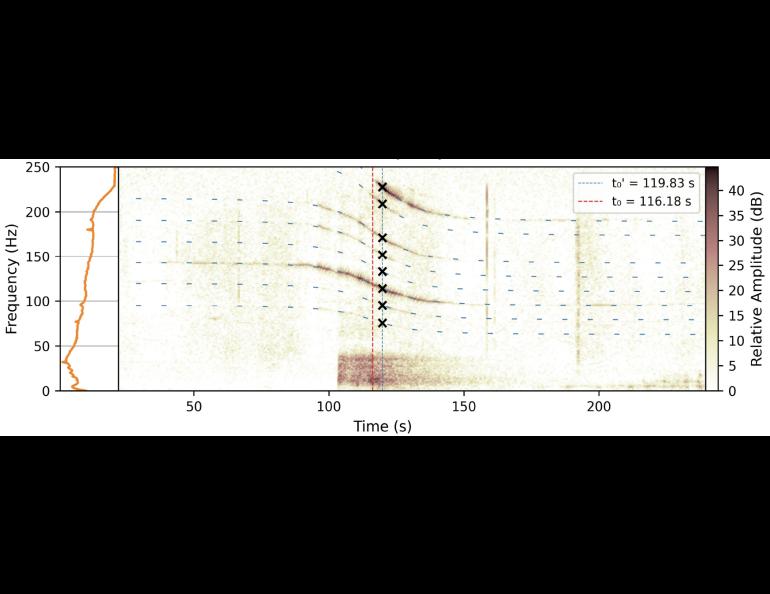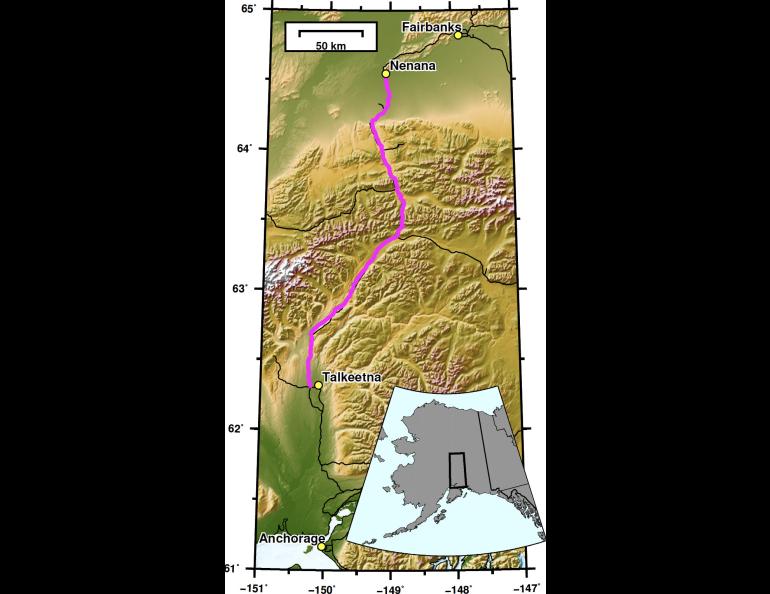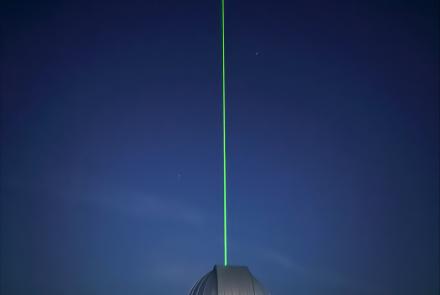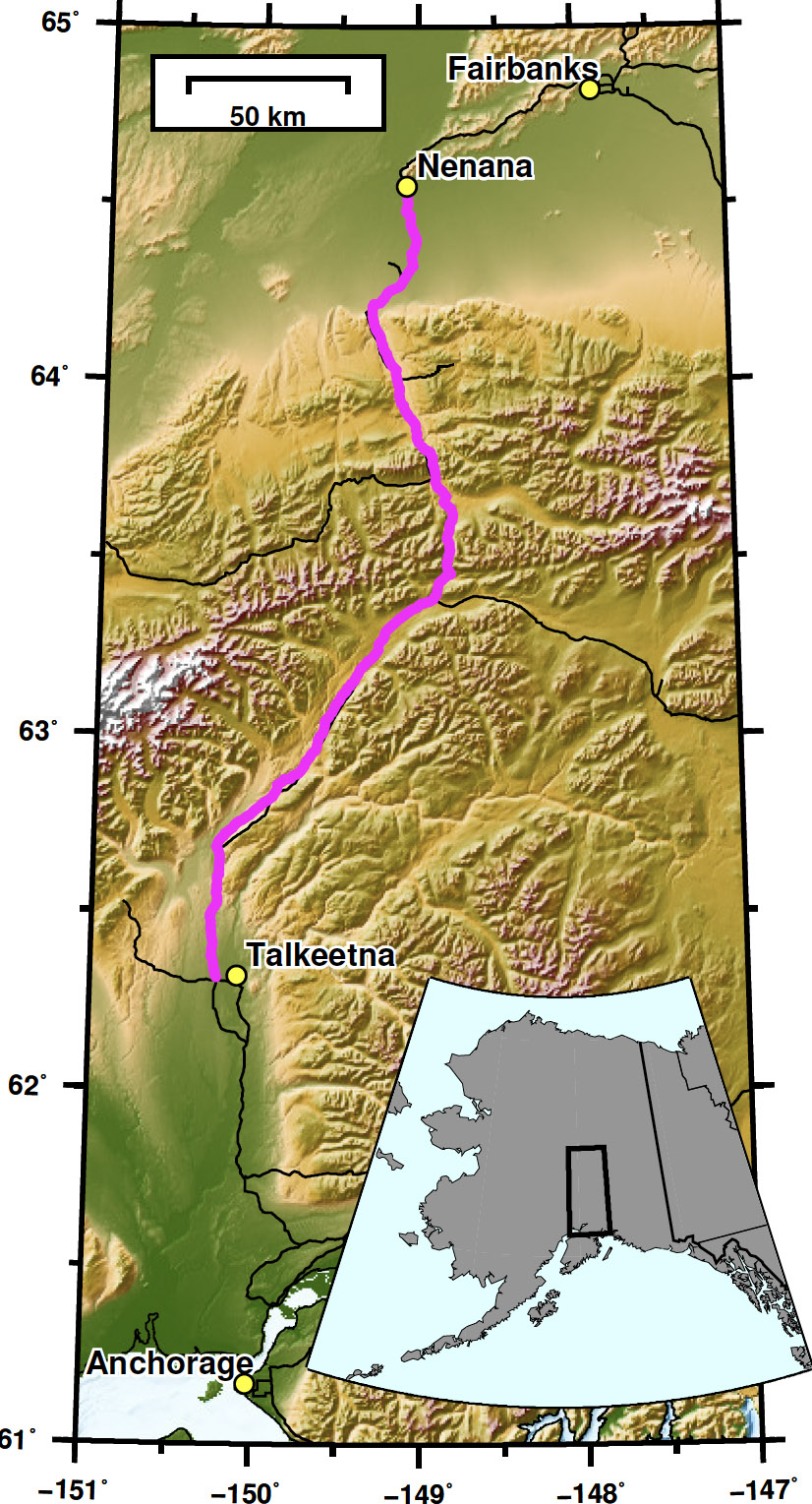

Seismic data can identify aircraft by type
Instruments typically used to detect the ground motion of earthquakes can also be used to identify the type of aircraft flying far overhead, research by University of Alaska Fairbanks scientists shows.
That’s because aircraft sound waves also shake the ground, though to a much lesser extent.
An aircraft’s type — a Cessna 185 Skywagon, for example — can be determined by analyzing a seismic spectrogram to find the aircraft’s frequency imprint from the sound waves it creates and then matching it with data from a catalog of aircraft frequency patterns.
“Aircraft signals are a lot higher frequency than anything else that’s prominent in the spectrum that seismometers are recording,” said graduate student researcher Bella Seppi, who is leading the research. “Earthquake signals and other signals that people are typically looking for are a lot lower frequency, so aircraft signals are pretty obvious most of the time.”
The method was published today in The Seismic Record, journal of the Seismological Society of America.
The discovery is a breakthrough in identification of airborne aircraft. More work lies ahead, including building an aircraft frequency pattern catalog more complete than the limited one produced for the research.
Seppi said the procedure could also be used for projecting potential sound impacts of aircraft types over environmentally sensitive areas.
“This new method has many uses,” she said.
The science
Seismometers record ground motion, including vibrations caused by sound waves — also known as acoustic waves or pressure waves. They record ground vibrations caused by an aircraft’s sound.
The waves show Doppler-shifted frequencies when displayed in a spectrogram, which is created by mathematically transforming the seismic data into a display of frequency changes over time. Higher frequencies indicate an aircraft approaching a seismometer, and lower frequencies indicate one moving away.
Think of an approaching ambulance. Its sound pitch rises as it nears, then drops as it travels away. That’s the Doppler effect.
The ambulance's true pitch is what you hear the moment it passes you by.
It’s the same for aircraft. The information provided by a seismometer produces a spectrogram showing an aircraft’s changing frequencies as it moves.
Data for Seppi’s work came from nearly 1,200 recordings made over 35 days by 303 seismometers funded by the National Science Foundation. The sensors, spaced approximately 1 kilometer apart along the highway, had been installed to record aftershocks of the 2018 magnitude 7.1 Anchorage earthquake and to image the subsurface structure.
These sensors can detect a wider range of frequencies than others in the state because they have a higher sample rate — 500 per second. Alaska’s seismic stations would need to be upgraded to that rapid sampling rate to be able to identify aircraft by type.
The research
Producing a spectrogram showing the changing frequencies of a passing aircraft doesn’t by itself reveal the aircraft’s type, however.
Seppi needed to find the aircraft’s true, or base, frequency by removing the Doppler effect and then creating a “frequency comb,” which is an object’s base frequency and its related harmonics — its recurring frequency pattern.
Most objects have a base frequency and harmonics because their vibration or motion is rarely perfectly smooth.
But how would Seppi know the frequency pattern of a Cessna 185, for example?
No catalog of aircraft type frequency patterns exists, so Seppi had to build one in order to proceed.
She began by gathering data from the Flightradar24 website, which provides information about an in-flight aircraft’s type, location, altitude, speed, flight path, origin and destination.
She then matched flight times from that website with the corresponding times in the spectrogram produced from the seismic record in the study area, which consisted of a portion of the Parks Highway between Nenana and Talkeetna, Alaska, in February and March 2019.
With a match, she had the Doppler curves of each aircraft’s sound waves.
The next step was to mathematically remove the Doppler effect to get the aircraft’s true frequency pattern — its frequency comb.
With that, she began building a frequency comb catalog for aircraft traveling in the study area, grouping them by type: piston, turboprop and jet.
“What surprised me the most is how consistent a lot of the frequency signals are,” she said.
With Seppi's technique, a frequency comb can be developed from any seismic recording of an aircraft. In the future, that could be compared to a catalog of known frequency combs to identify the aircraft type. Additional information, such as direction and speed, can also be drawn from the spectrogram curves by analyzing the influence of the Doppler effect upon them.
Additional work will focus on trying to determine how far away each aircraft can be for its first detection and using data from multiple seismometers to determine additional flight information.
Co-authors include geophysics professor Carl Tape of the UAF Geophysical Institute and College of Natural Science and Mathematics and research professor David Fee, also of the Geophysical Institute.
The work was primarily funded by the U.S. Department of Defense.
• Bella Seppi, University of Alaska Fairbanks, irseppi@alaska.edu
• Carl Tape, University of Alaska Fairbanks, ctape@alaska.edu
• Rod Boyce, University of Alaska Fairbanks Geophysical Institute, 907-474-7185, rcboyce@alaska.edu






